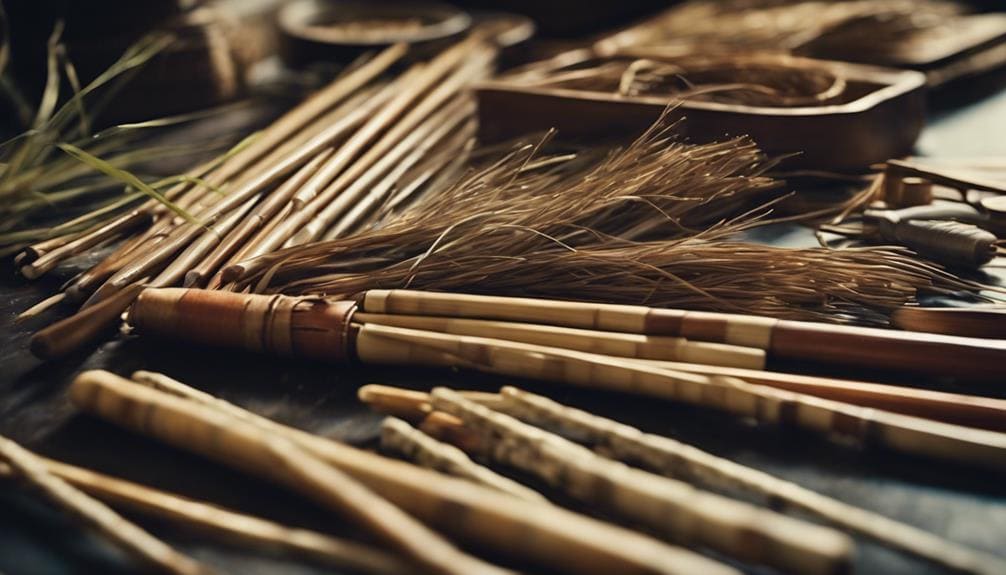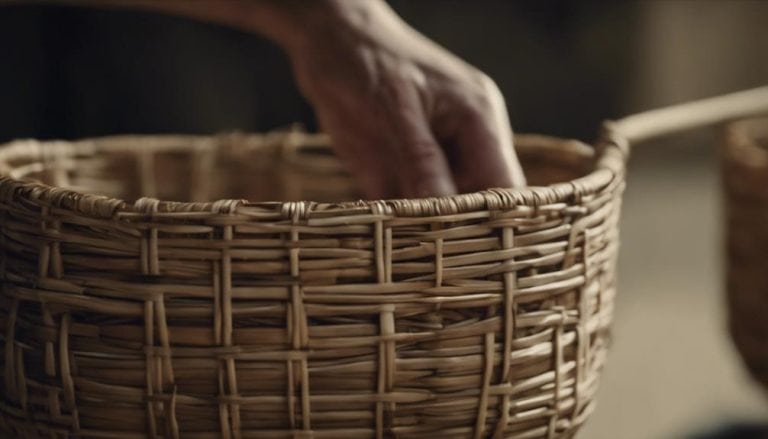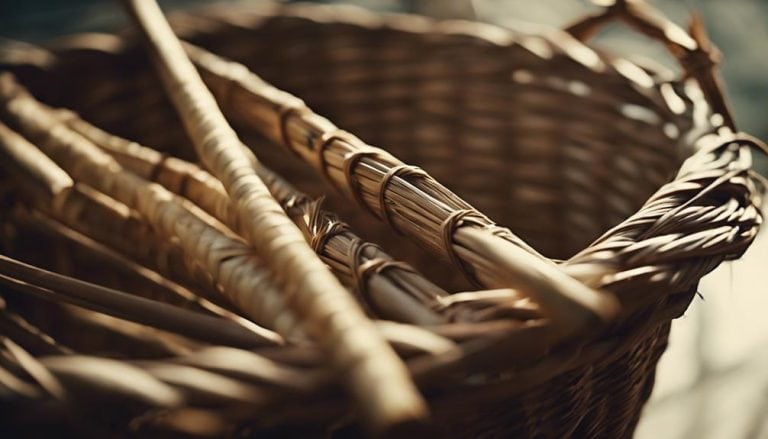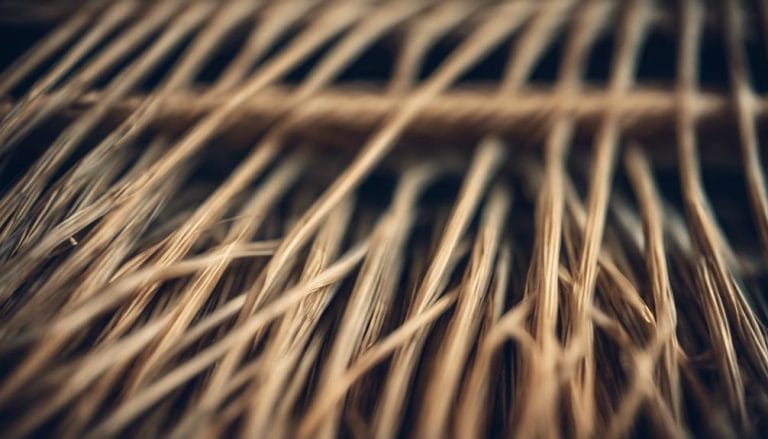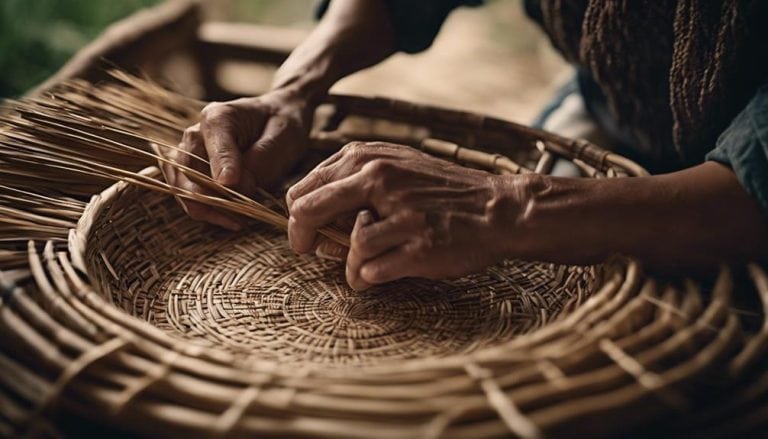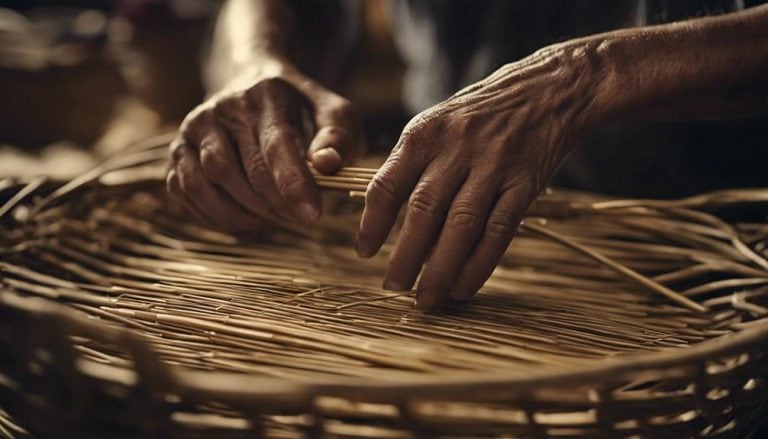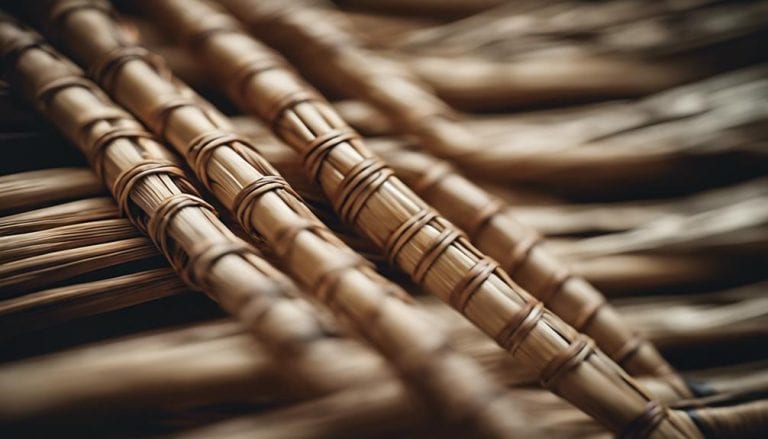How to Choose Rush Reeds for Basketry
As I learned, did you know that rush reeds come in over 30 varieties, each with unique characteristics? Understanding how to choose the right rush reeds for basketry is crucial for any weaver. The process involves considering factors like the type of basket you are creating, the color and size of the reeds, and your level of expertise.
By the end of this discussion, you’ll have a clearer insight into making informed decisions when selecting rush reeds, ensuring your basketry projects turn out just the way you envision.
When choosing rush reeds for basketry, consider their flexibility and thickness to ensure they suit your weaving style. Experiment with different types to find the best match for your projects.
Key Takeaways
- Consider reed size based on design intricacy and basket dimensions.
- Evaluate reed color for visual appeal and artistic expression.
- Select reed grade for weaving challenges and desired basket look.
- Ensure proper drying and storage for quality reed preparation.
Understanding Rush Reeds Varieties
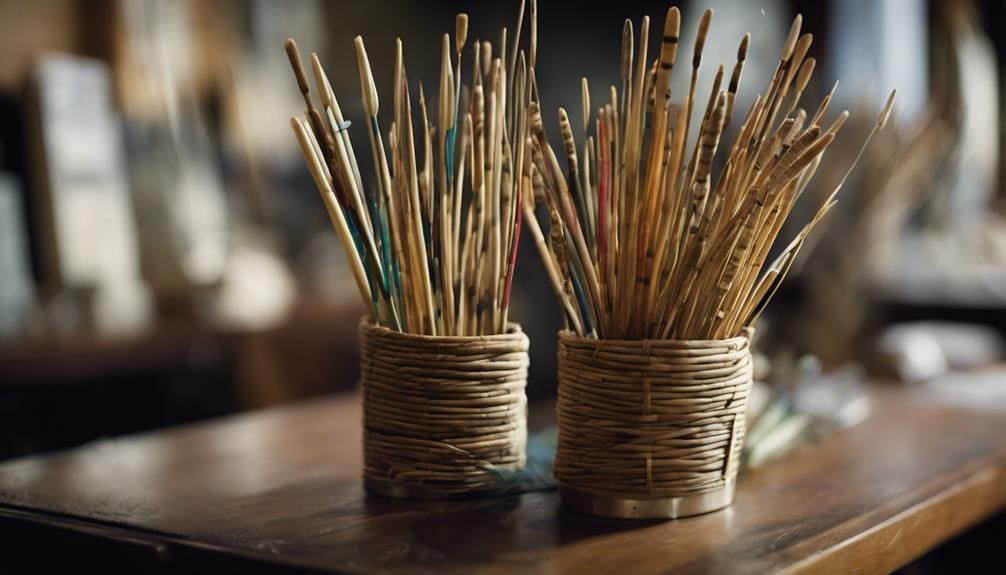
Understanding the diverse characteristics of rush reed varieties is essential for proficiently selecting materials suited for specific basket weaving techniques. Soft Rush, thriving in wetlands and marshy areas, boasts a smooth, round stem perfect for coiled basketry. Its flexibility and uniform thickness make it an ideal choice for intricate designs.
On the other hand, Common Rush, found in meadows, fields, and riverbanks, features a ridged stem with a triangular cross-section, making it suitable for twining and plaiting techniques in basket weaving. Each variety’s distinct growth patterns and harvesting locations influence their reed characteristics, affecting their basket-making availability. By recognizing these differences, we can make informed decisions when choosing rush reeds for our projects, ensuring that the materials align perfectly with the desired weaving styles.
Factors for Size Selection
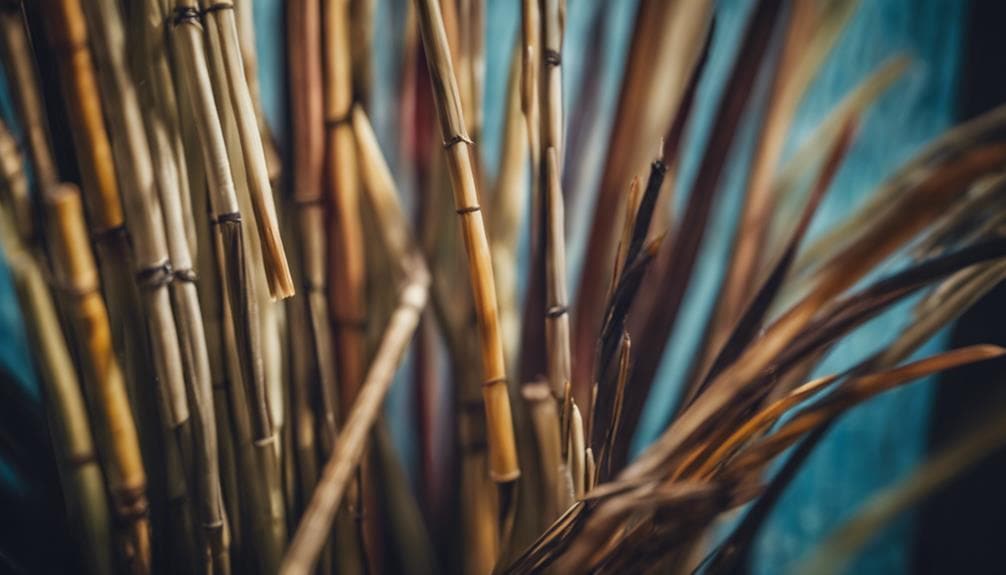
When selecting rush reeds for basket making, the size of the reeds plays a crucial role in determining the basket’s final dimensions and structural integrity. It is essential to consider the desired basket size and the intricacy of the design when choosing rush reeds. Thinner rush reeds are ideal for creating smaller or more detailed baskets, while thicker reeds provide sturdiness for larger designs.
The flexibility of the reeds is also a key factor to assess, especially regarding the weaving technique and pattern being used. Ensuring that the rush reeds are consistent in size is crucial for achieving uniformity in the basket’s construction and overall strength.
- Reed thickness: Choose thinner reeds for intricate designs and thicker reeds for sturdier baskets.
- Flexibility: Consider the flexibility of the rush reeds based on the weaving patterns you intend to use.
- Size considerations: Match the reeds’ size with the basket’s desired final dimensions.
- Weaving patterns: Select rush reeds that align with the weaving patterns you plan to implement.
- Structural integrity: Choose rush reeds that are uniform in size to ensure the basket’s overall strength and consistency.
Evaluating Reed Color Options
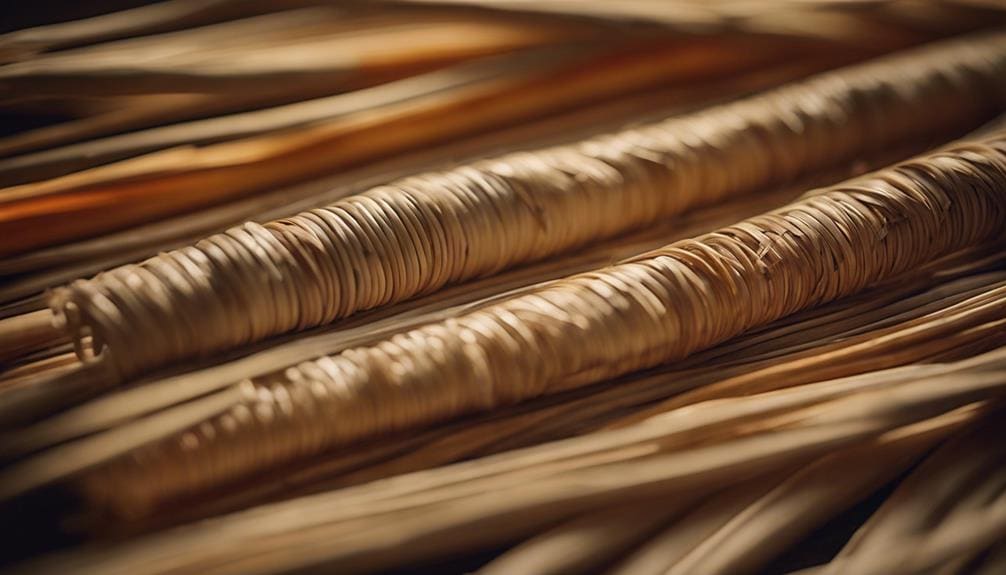
Exploring the various natural color options available for rush reeds in basket making offers a range of possibilities for enhancing the visual appeal and design flexibility of woven baskets. When evaluating reed color options, consider how color coordination can complement different weaving patterns and styles, adding depth and richness to the overall design.
Aesthetic preferences play a key role in selecting the right rush reed hues, as each color can evoke a different mood or atmosphere within the basket. Whether aiming for a harmonious blend or a striking contrast, the choice of reed color contributes significantly to artistic expression in basket weaving.
Understanding the nuances of color variations in rush reeds allows for creative and personalized basket designs that reflect individual tastes and styles. By carefully selecting reed colors based on design elements and personal preferences, we can achieve visually captivating baskets that stand out for their unique aesthetic appeal. Remember, the color of rush reeds is not just a visual aspect but a crucial element in conveying the desired message through the art of basketry.
Assessing Reed Quality Grades
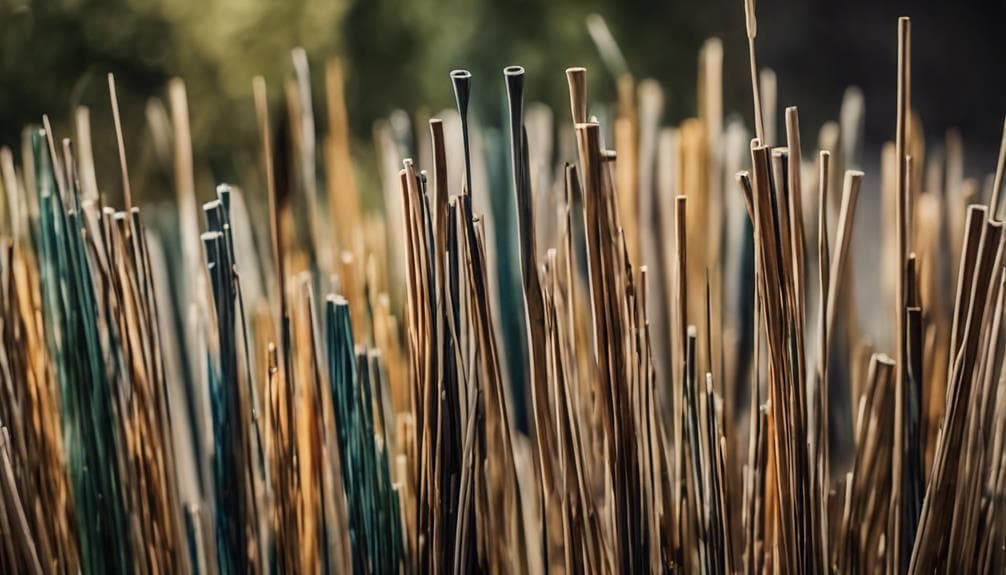
To assess the quality of rush reeds for basket weaving, one must consider the grading system that categorizes reeds based on their characteristics and suitability for different weaving projects. When evaluating rush reed quality, it is essential to compare different grades to make informed decisions for your basket weaving endeavors.
Here are some key points to consider:
- Reed grade comparisons: Understanding the distinctions between Grade A, Grade B, and Grade C rush reeds will help you select the most suitable quality for your specific project requirements.
- Quality considerations: Higher-grade rush reeds offer finer and more uniform strands, perfect for intricate and detailed basket designs, while lower grades may be better suited for rustic or less intricate basketry.
- Weaving challenges: Selecting the right quality grade is crucial to overcoming weaving challenges, ensuring a smoother process and superior final results.
- Reed selection: The grade of rush reeds chosen will directly impact the overall look, durability, and intricacy of your woven baskets, so choose wisely based on your weaving goals and preferences.
- Optimal weaving results: By selecting the appropriate rush reed grade, you can achieve optimal results in your basket weaving projects, enhancing both the aesthetic appeal and structural integrity of your creations.
Techniques for Drying Rush Reeds
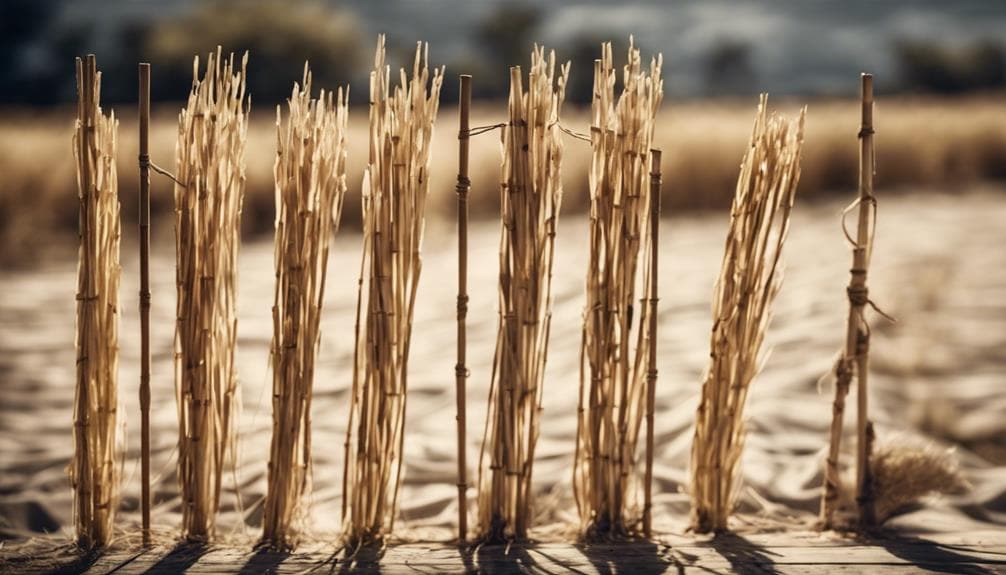
Properly drying rush reeds is crucial to ensure their quality and suitability for successful basket weaving projects. Rush reeds should be dried in a well-ventilated area to prevent mold and mildew. Hanging them individually allows for even drying and prevents sticking together. Avoid direct sunlight to prevent fading or discoloration, and drying them upside down helps maintain their shape and prevent bending or warping. Properly dried rush reeds are essential for long-lasting finished products.
| Drying Methods | Benefits | Common Mistakes |
|---|---|---|
| Well-ventilated area | Prevents mold and mildew | Direct sunlight exposure |
| Hanging individually | Ensures even drying | Rush reeds sticking |
| Avoiding sunlight | Prevents fading and discoloration | Improper hanging |
| Drying upside down | Maintains shape and prevents warping | Rush reeds bending |
| Proper drying | Essential for successful weaving | Rush reeds not fully dried |
Preparation and Storage Tips
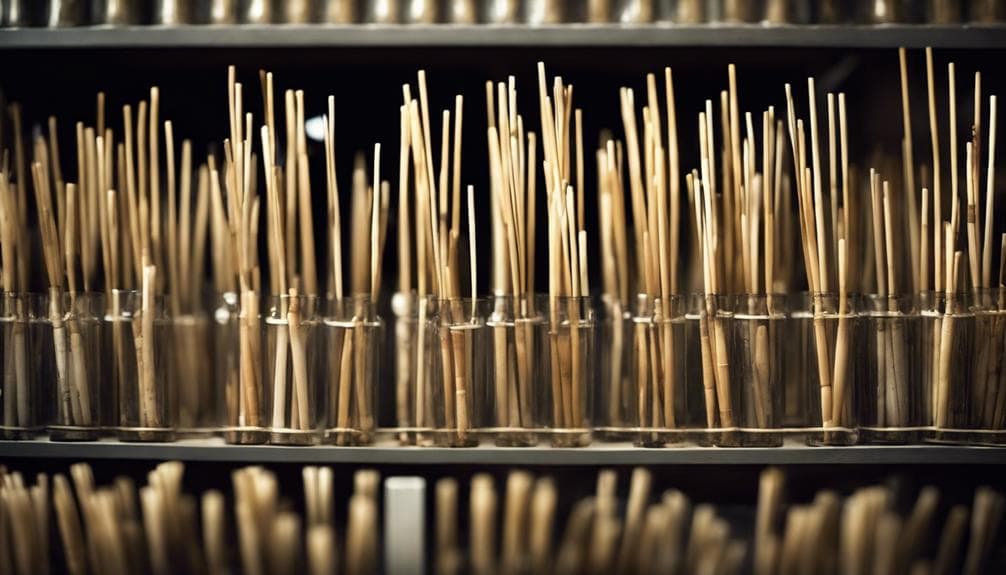
When preparing rush reeds for basket weaving, it is essential to carefully sort and store them in a cool, dry environment to maintain their quality and flexibility. Proper storage is key to ensuring your rush reeds remain in optimal condition for your basketry projects. Here are some preparation and storage tips to follow:
- Sort Rush Reeds: Categorize rush reeds by size and quality to achieve consistency in your weaving.
- Inspect for Quality: Before weaving, check rush reeds for mold, mildew, or any damage that may affect the final product.
- Avoid Sunlight and Moisture: Store rush reeds away from direct sunlight and moisture to prevent deterioration and breakage.
- Proper Packaging: Use appropriate containers or bags to protect rush reeds from dust and other contaminants.
- Storage Solutions: Explore various storage options such as bins, boxes, or shelves to keep rush reeds organized and easily accessible.
Following these tips will help enhance the strength and durability of your woven baskets, ensuring a successful basket weaving experience.
Choosing the Right Reed for Weaving
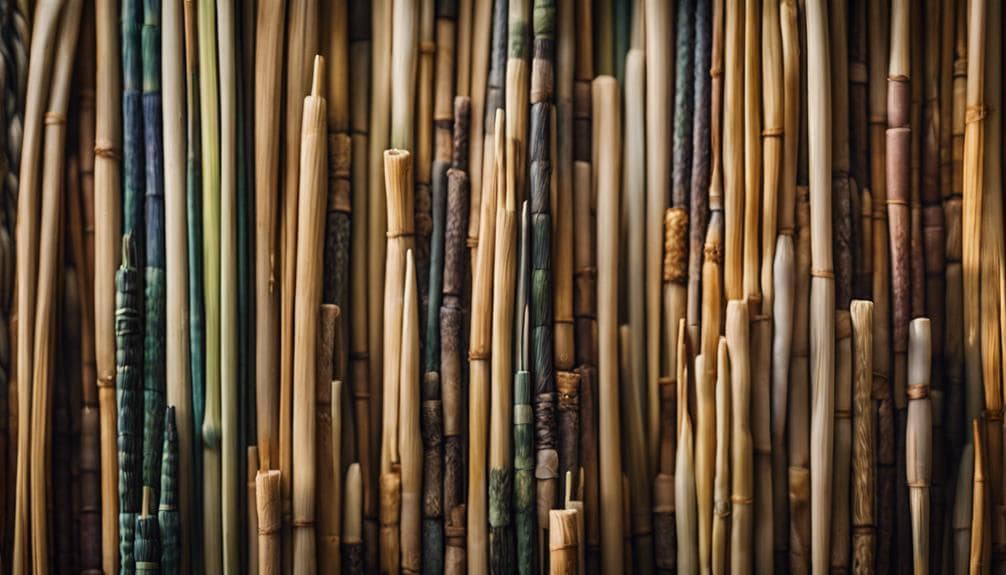
For optimal basket weaving results, carefully selecting the appropriate thickness and flexibility of rush reeds is crucial to achieving desired basket designs and techniques. Reed flexibility plays a significant role in determining the ease of weaving and the overall strength of the final product. Thicker reeds provide sturdier support for structural elements, while more flexible reeds are ideal for intricate weaving patterns and designs requiring bending or twisting.
When choosing rush reeds for weaving, it is essential to prioritize color consistency and texture uniformity. Consistent coloring ensures a harmonious look throughout the basket, while uniform texture enhances the overall aesthetics and durability. Variations in color or texture can detract from the finished piece’s visual appeal and structural integrity.
Frequently Asked Questions
How Do You Harvest Rushes for Weaving?
When harvesting rushes for weaving, I cut them low in late summer for sturdy fibers. Select straight, undamaged stems for smooth weaving. Avoid pollution. Dry rushes completely before weaving to prevent mold. Sustainability and proper drying methods are key.
What Are the Best Sticks for Basket Weaving?
When selecting sticks for basket weaving, I prioritize quality rush reeds. Straight, flexible rushes with smooth surfaces and consistent thickness create sturdy baskets. Matching rush types to basketry techniques and designs ensures a durable and visually appealing outcome.
What Reeds Are Used for Basket Weaving?
For basket weaving, various reed varieties, such as bulrush, sweet rush, and soft rush, are used. These reeds offer flexibility and strength, perfect for coiling or twining techniques. The choice of reeds impacts the final weave structure and aesthetics.
How Long to Soak Reeds for Basket Weaving?
Soak rush reeds for basket weaving in warm water for at least 20-30 minutes. Check flexibility post-soak. Properly soaked reeds are easier to weave into intricate patterns. Longer soak for thicker reeds.
Conclusion
In conclusion, choosing rush reeds for basketry is like picking the perfect bouquet for a masterpiece. It’s all about selecting the right size, color, and quality to bring your vision to life. Just imagine weaving with rush reeds as delicate as a whisper or as sturdy as a fortress. Your basketry creations will bloom with beauty and craftsmanship with the right reeds. Happy weaving!

